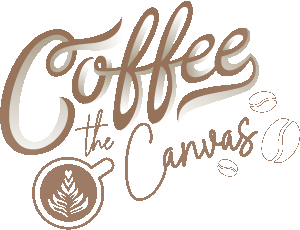Few drinks are as deeply woven into human culture as coffee. Whether it’s your quiet companion during sunrise or fuel for late-night projects, that simple cup has a remarkable story that stretches across centuries, continents, and empires. In this guide, we’ll journey through the rich history of coffee — from its mysterious beginnings in ancient Ethiopia to the modern-day café culture that defines cities worldwide.
The Mythical Origins: Kaldi and the Dancing Goats

Legend has it that coffee was discovered in 9th-century Ethiopia by a goat herder named Kaldi. He noticed that his goats became unusually energetic after nibbling on bright red berries from a wild shrub. Curious, Kaldi tried the berries himself — and experienced the same burst of vitality.
Monks at a nearby monastery took note and began brewing the berries into a drink to help stay awake during long prayers. That energized ritual soon spread beyond Ethiopia, setting the stage for coffee’s global journey.
Fun Fact: The word “coffee” is believed to be derived from “Kaffa”, a region in southwest Ethiopia where the plant first grew wild.
Coffee Moves to the Arab World (15th Century)

By the 1400s, coffee had made its way across the Red Sea into Yemen, where it was cultivated in gardens and brewed in Sufi monasteries. The Sufis used it to remain alert during night-long religious ceremonies. It was here that coffee as a drink truly evolved, giving rise to the earliest coffeehouses in the Islamic world.
The city of Mocha, a Yemeni port, became synonymous with the coffee trade. That’s why the chocolate-flavored coffee we enjoy today is still called a “mocha.”

By the 16th century, coffee had spread to Persia, Egypt, and the Ottoman Empire. In Constantinople (now Istanbul), the world saw the birth of the first formal coffeehouses, known as qahveh khaneh.
These weren’t just places to drink coffee — they became hubs of intellectual exchange, conversation, music, and even chess. In many ways, these early coffeehouses were the blueprint for today’s cafés.
Coffee Reaches Europe (17th Century)

European traders and travelers brought coffee to Venice around 1615. Initially met with suspicion and sometimes labeled the “bitter invention of Satan,” coffee eventually gained acceptance — even Pope Clement VIII gave it his blessing after tasting it.
Coffeehouses rapidly opened across England, France, Austria, and Germany. In London, they earned the nickname “penny universities” because, for the price of a penny, one could engage in stimulating conversation with artists, merchants, and philosophers.
Historical Highlight: The world-famous Lloyd’s of London insurance market began as a coffeehouse.
Colonialism and Coffee Cultivation

Europe’s growing love for coffee fueled colonial powers to plant coffee in their overseas territories. The Dutch established coffee plantations in Java (Indonesia), the French in the Caribbean, and the Portuguese in Brazil.
By the 18th century, Brazil emerged as the world’s largest coffee producer, a title it still holds today.
Want to explore where your coffee comes from? Visit National Coffee Association USA for more detailed timelines and resources.
Coffee in the United States

Coffee’s popularity in the U.S. surged after the Boston Tea Party in 1773 when drinking tea was seen as unpatriotic. By the 1800s, coffee became a daily habit for American households.
During World War II, the U.S. government included instant coffee in soldiers’ rations, further cementing it as a cultural staple. The post-war era saw the rise of diner culture, with bottomless coffee pots and stainless-steel counters defining American mornings.
The Third Wave Movement and Specialty Coffee (Late 20th Century – Today)
The 1980s and 1990s ushered in a shift from mass-produced coffee to artisan and specialty brews. Inspired by the “third wave coffee” movement, roasters and consumers began valuing origin, bean variety, ethical sourcing, and brewing methods.
Pioneers like Blue Bottle, Stumptown, and Intelligentsia focused on single-origin beans and transparency — forever changing how people viewed and tasted coffee.
Now, in 2025, the focus has evolved toward sustainability, regenerative agriculture, and technology-driven brewing. You can trace your beans back to the farm with a QR code or brew café-quality coffee at home with a smart espresso machine.
Why Understanding Coffee's History Matters
Knowing where your morning cup comes from connects you to a story of culture, migration, resilience, and innovation. It’s more than just caffeine — it’s a shared legacy. From monks in Yemen to baristas in Tokyo, coffee is a universal language that brings people together.
Final Thoughts: From Bean to Brew in 2025
The next time you sip your favorite brew, remember — it’s not just a drink. It’s the result of centuries of discovery, politics, trade, and human passion. And while the tools and trends may change, the heart of coffee culture — connection and curiosity — remains the same.
Quick Timeline: Coffee Through the Ages
| Year | Event |
|---|---|
| 850 AD | Kaldi discovers coffee in Ethiopia |
| 1400s | Sufi monks brew coffee in Yemen |
| 1475 | First coffee shop opens in Constantinople |
| 1615 | Coffee reaches Venice |
| 1652 | First coffeehouse in England opens |
| 1727 | Coffee introduced to Brazil |
| 1901 | Instant coffee invented in Japan |
| 2025 | Tech meets coffee: AI-roasted beans, sustainable cafés, and zero-waste shops |
Frequently Asked Questions (FAQs)
1. Who discovered coffee?
Legend says an Ethiopian goat herder named Kaldi discovered coffee around the 9th century after noticing his goats became energetic from eating red berries.
2. Where did coffee originate?
Coffee originated in Ethiopia and spread to Yemen, where it became a brewed drink in Sufi religious practices.
3. When did coffee come to Europe?
Coffee arrived in Venice in 1615 and quickly spread across Europe, becoming popular in England, France, and Austria.
4. What is the oldest coffeehouse in the world?
The first known coffeehouse opened in Constantinople (Istanbul) in 1475.
5. How did coffee spread globally?
Through trade, colonization, and the expansion of the Ottoman and European empires, coffee was cultivated in Asia, Africa, and Latin America.
6. What is third wave coffee?
It’s a modern movement that treats coffee as an artisan product, focusing on origin, quality, and ethical sourcing.
7. Why is coffee so popular today?
Beyond caffeine, it’s loved for its flavor, ritual, and ability to connect people across cultures and generations.




